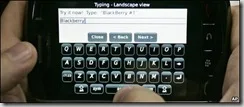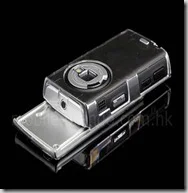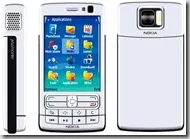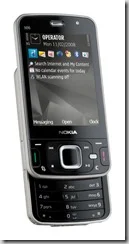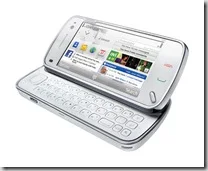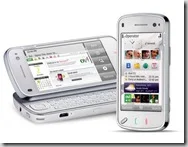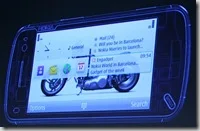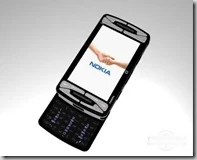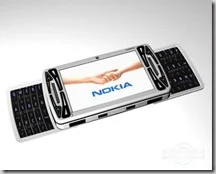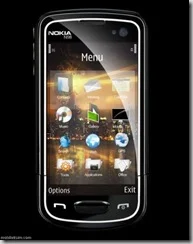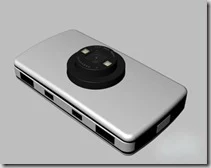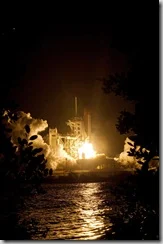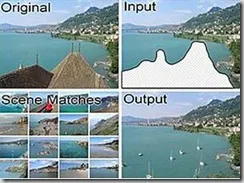The last 12 months has seen the launch of iconic devices such as the iPhone 3G, Google G1, Blackberry Storm and Nokia N97.
It also saw the emergence of the electronic ecosystems needed to get the most out of such handsets.
But all is not rosy in the smartphone garden. The popularity of these devices has brought to light several problems that look set to become acute in 2009.
Nokia N 95
Use the Nokia N95 for connecting to mobile Broadband using WLAN or HSDPA (3.5G) with up to 10 times faster downloading than 3G. Find directions and locations with the integrated GPS and included maps. The Nokia N95 is a GSM/WCDMA dual mode portable multimedia computer supporting EGSM 850/900/1800/1900 and WCDMA 2100 HSDPA. Use the Nokia N95 to take photos with a 5 megapixel autofocus camera and enjoy videos, music and graphics with crystal clarity on the 2.6” QVGA (240 x 320 pixels), 16M color display. Listen to music with enhanced “3D stereo” using the built-in dual speakers or for a big screen experience, connect the Nokia N95 to a compatible TV using direct TV out connectivity or via Wireless LAN and UPnP technology. Additional Nokia N95 features include USB 2.0, Bluetooth 2.0 EDR with A2DP stereo audio, and MicroSD memory card support.
Nokia N 96
Nokia today unveiled the Nokia N96, a multimedia computer truly optimized for video and TV. With a large 2.8" screen, 16 gigabytes of internal memory and support for high-quality videos in a wide range of formats, the dual-slide Nokia N96 represents an exciting new chapter in mobile media. The Nokia N96 multimedia computer is expected to begin shipping in the third quarter of 2008 with an estimated sales price of approximately 550 euros, before subsidies or taxes.Accessing internet videos is quick and simple. The Nokia N96 supports common video formats including MPEG-4, Windows Media Video and Flash Video, making favorite videos easy to view. Transferring and accessing videos is even faster with the high-speed USB 2.0 connection and WLAN and HSDPA support. In select markets, the integrated DVB-H receiver offers live broadcast TV with an automatically updating program guide. The massive memory can store up to 40 hours of video content. The storage capacity of the Nokia N96 can even be further expanded with an optional microSD card, such as the new Nokia 8GB microSDHC Card MU-43 which increases the available memory of the Nokia N96 to a total of 24 GB. For a superb music experience, the Nokia N96 features media keys, a 3.5 mm headphone 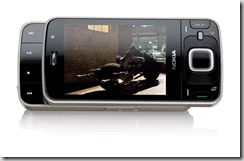 connector and built-in 3D stereo speakers. The Nokia Maps application offers richer maps with urban details and satellite views and has upgrade options such as City Guides, turn-by-turn pedestrian mode and voice-guided car navigation. The Nokia N96 boasts a 5 megapixel camera with Carl Zeiss optics, flash and video light. It allows DVD-like quality video capture at 30 frames per second. Further, with the integrated A-GPS, consumers can now 'geotag' their pictures with location data and share them with their online communities. The Nokia N96 naturally supports the Ovi family of Nokia internet services, including maps, music, media sharing and more.
connector and built-in 3D stereo speakers. The Nokia Maps application offers richer maps with urban details and satellite views and has upgrade options such as City Guides, turn-by-turn pedestrian mode and voice-guided car navigation. The Nokia N96 boasts a 5 megapixel camera with Carl Zeiss optics, flash and video light. It allows DVD-like quality video capture at 30 frames per second. Further, with the integrated A-GPS, consumers can now 'geotag' their pictures with location data and share them with their online communities. The Nokia N96 naturally supports the Ovi family of Nokia internet services, including maps, music, media sharing and more.
Nokia N 97
Details are in, Nokia has a new flagship phone. The N97 packs a 3.5-inch, 640 x 360 pixel (that's a 16:9 aspect ratio) resistive touchscreen display with tactile feedback and QWERTY keyboard into this sliding communicator with an "always open" window to favorite internet or social networking sites. Nokia calls it the "world's most advanced mobile computer." To back up the claim they've dropped in HSDPA, WiFi, and Bluetooth radios, A-GPS, a 3.5-mm headjack, 32GB of onboard memory with microSD expansion (for up to 48GB total capacity), and a battery capable of up to 1.5 days of continuous audio playback or 4.5-hours video. 5 megapixel camera with Carl Zeiss glass and "DVD quality" video capture at 30fps, too. The specs are certainly impressive, let's see if the S60 5th Edition OS can support it. The N97 will launch with a retail price set at around €550 ($693) excluding subsidies and taxes, phone to ship in H1 2009.
Nokia N 98
Upcoming in 2009 ............
- 10 GB internal memory
- CDMA 2100
- 850/900/1800/1900 MHz
- HSDPA
- 3.2 inch screen with 16 million colors
- WiFi, Bluetooth 2.0, Mini USB 2.0 and infrared
- full QWERTY keyboard
- 6MP camera with Carl Zeiss optics and optic zoom
- 3.5mm jack
- Digital TV
- FM Radio
- GPRS
- touchscreen and joystick navigation
- motion sensor
Nokia N-Series
For more Information Go to www.nseries.com
